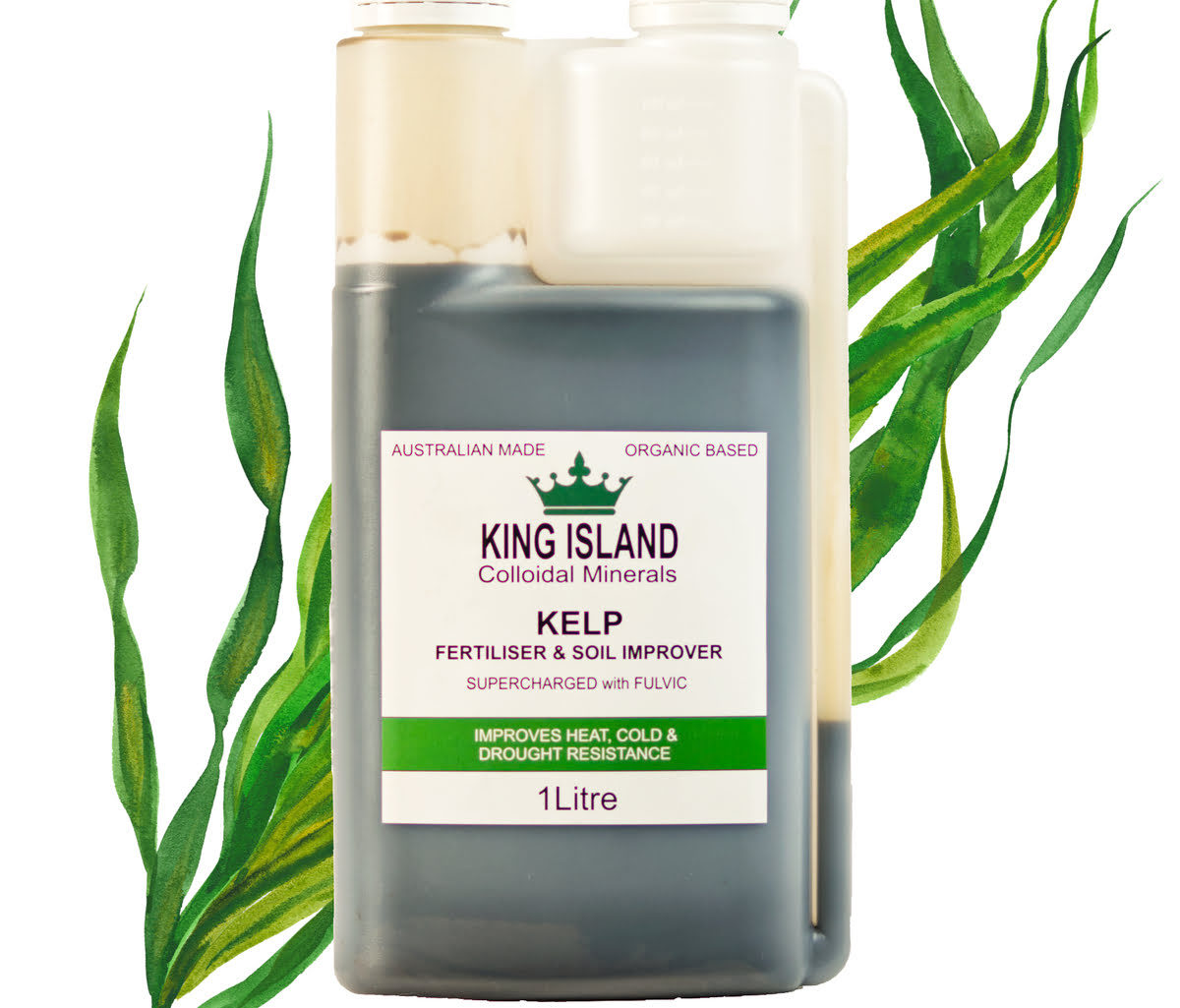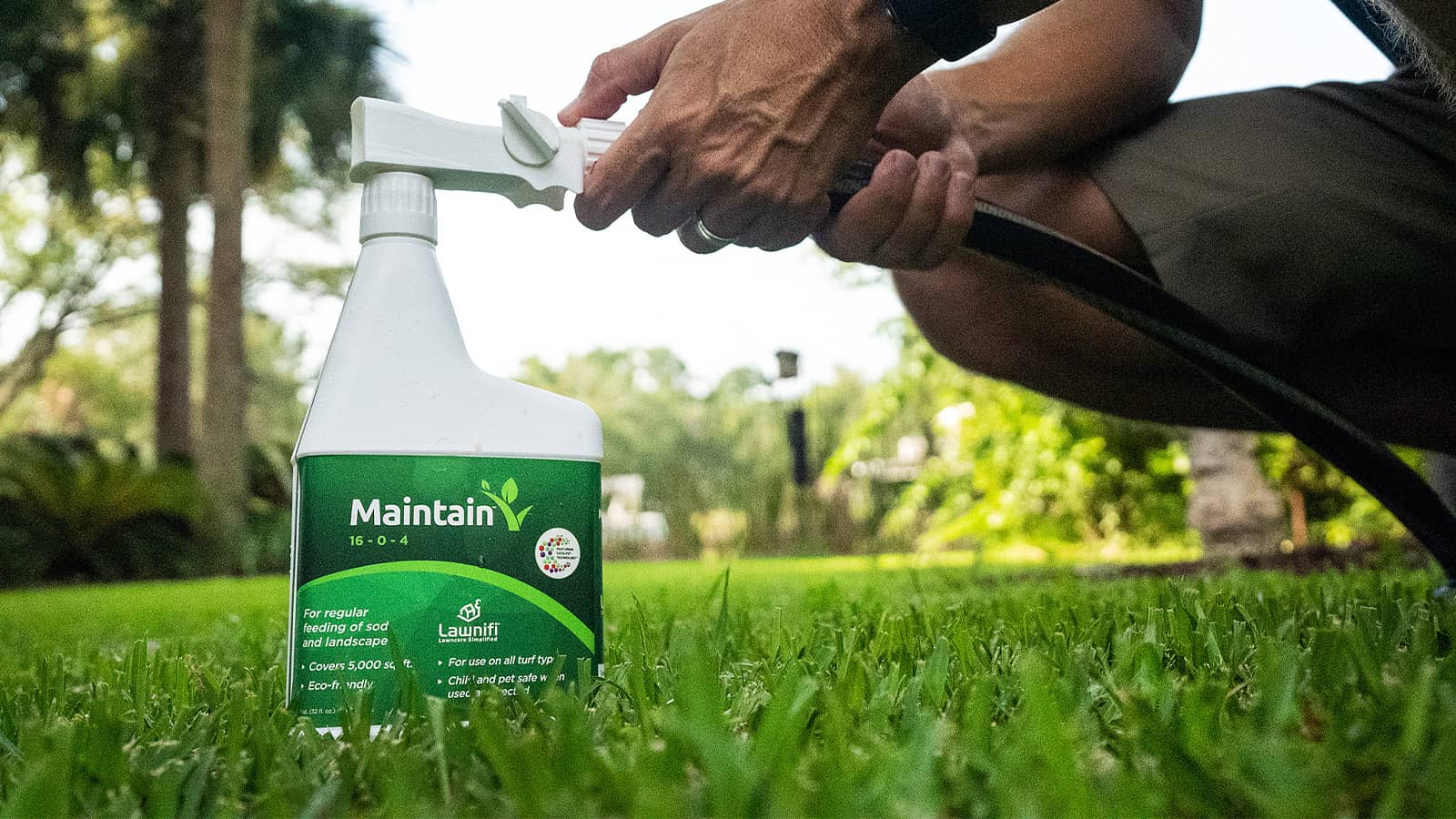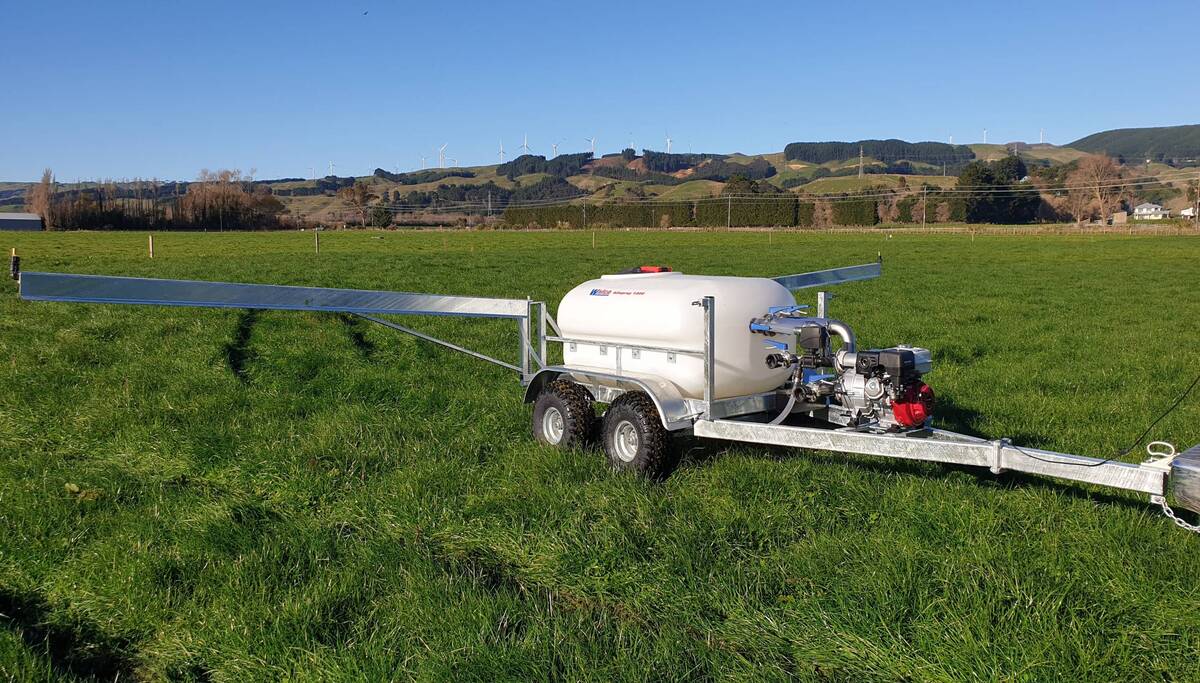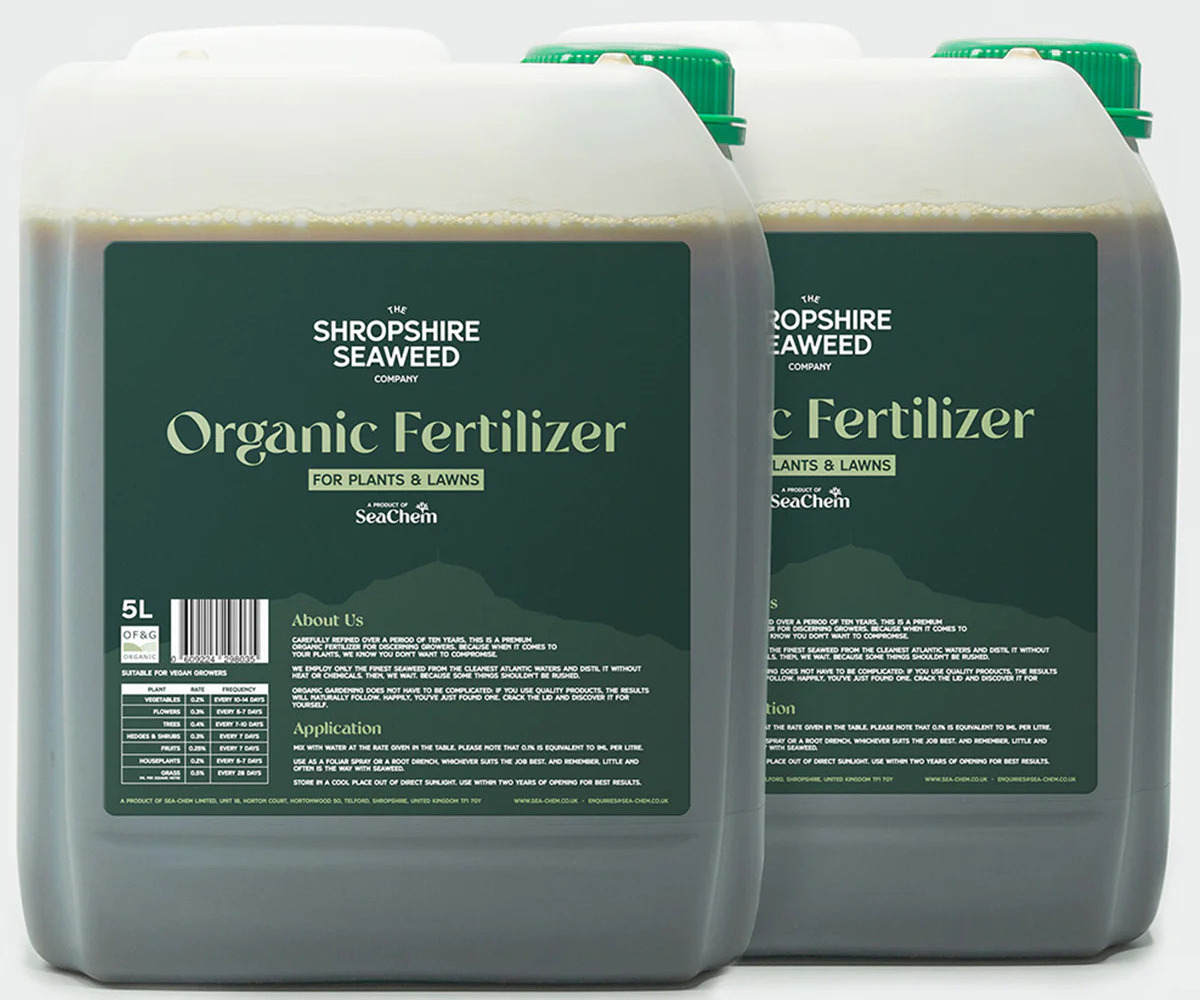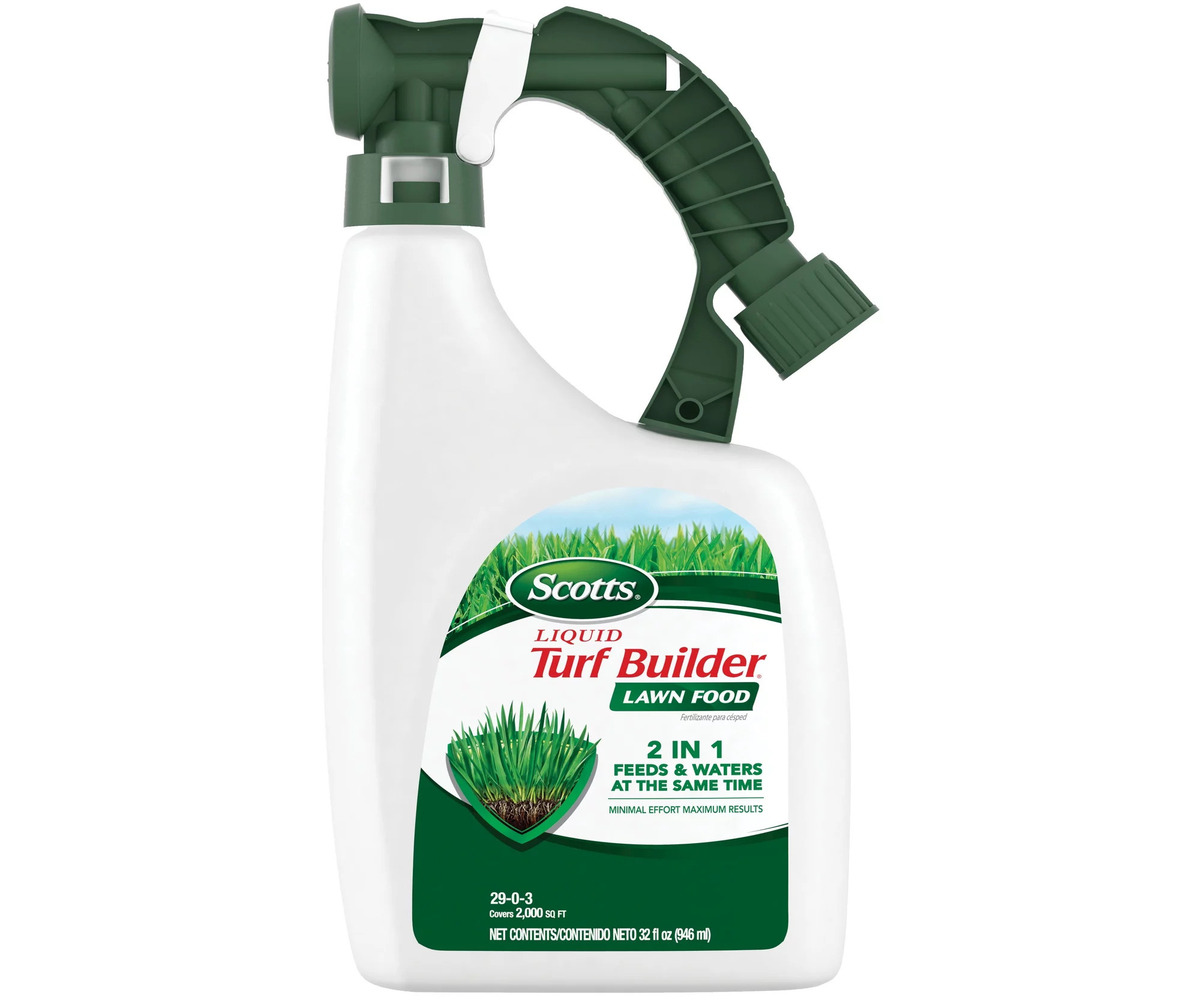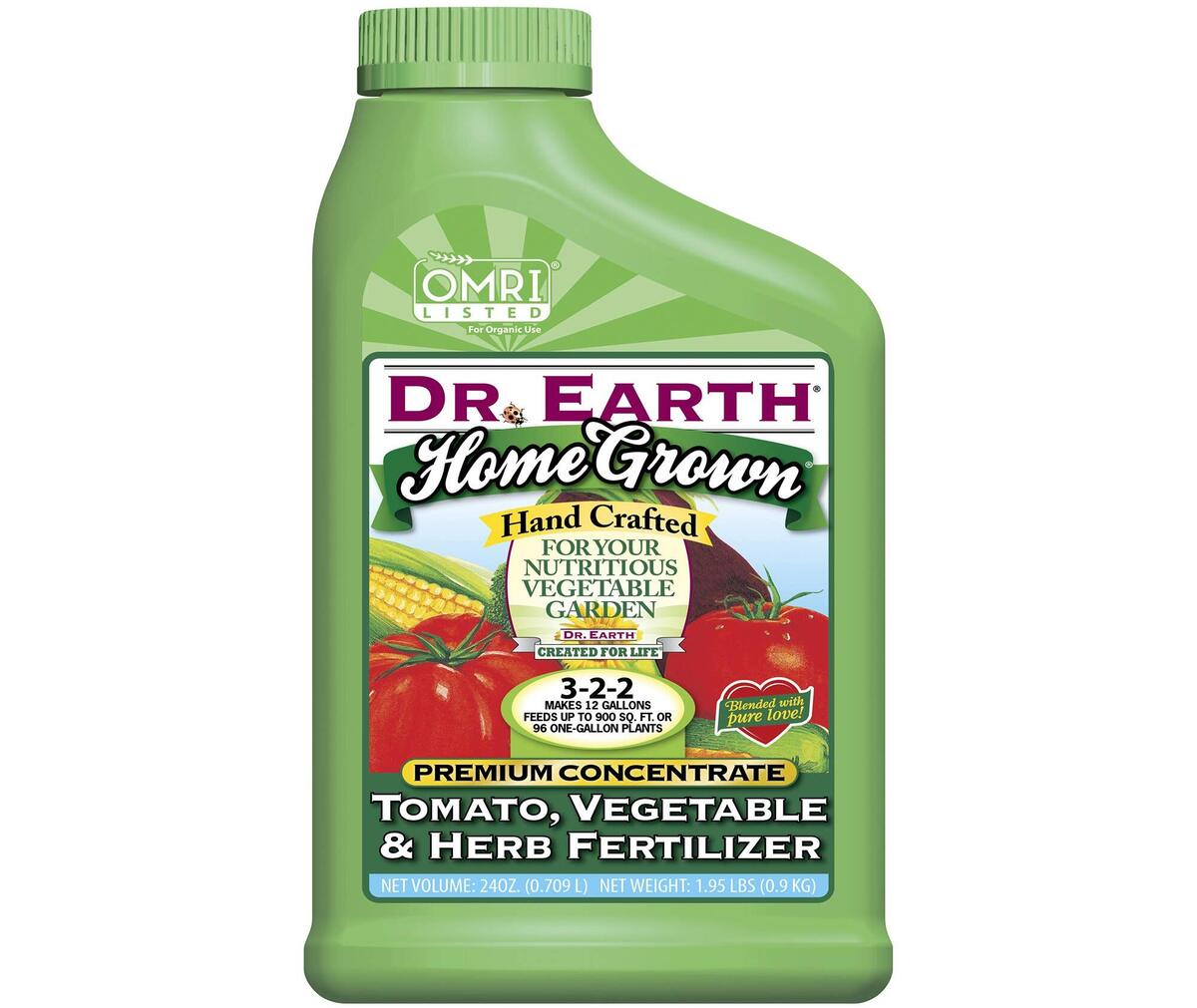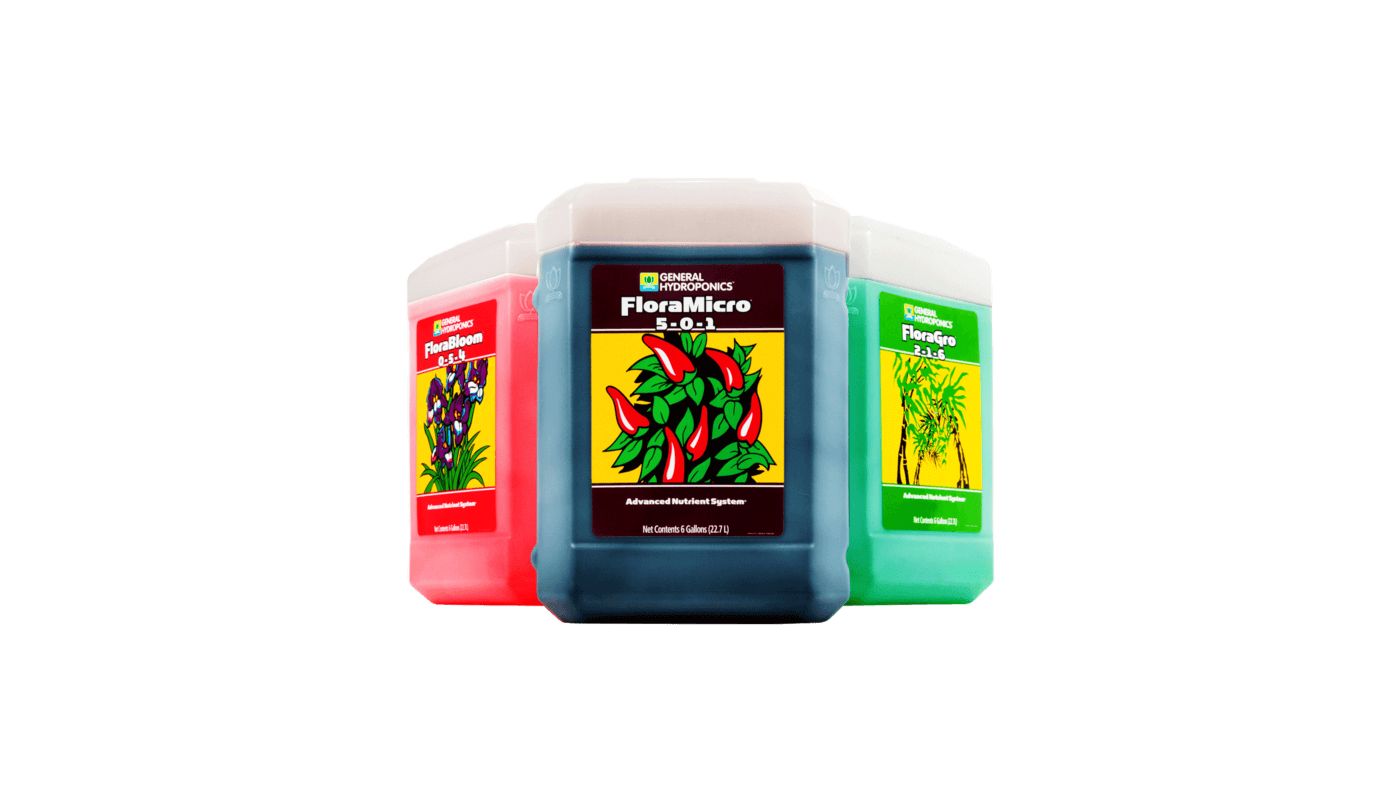Home>Gardening Techniques>DIY Projects>What Is Liquid Fertilizer
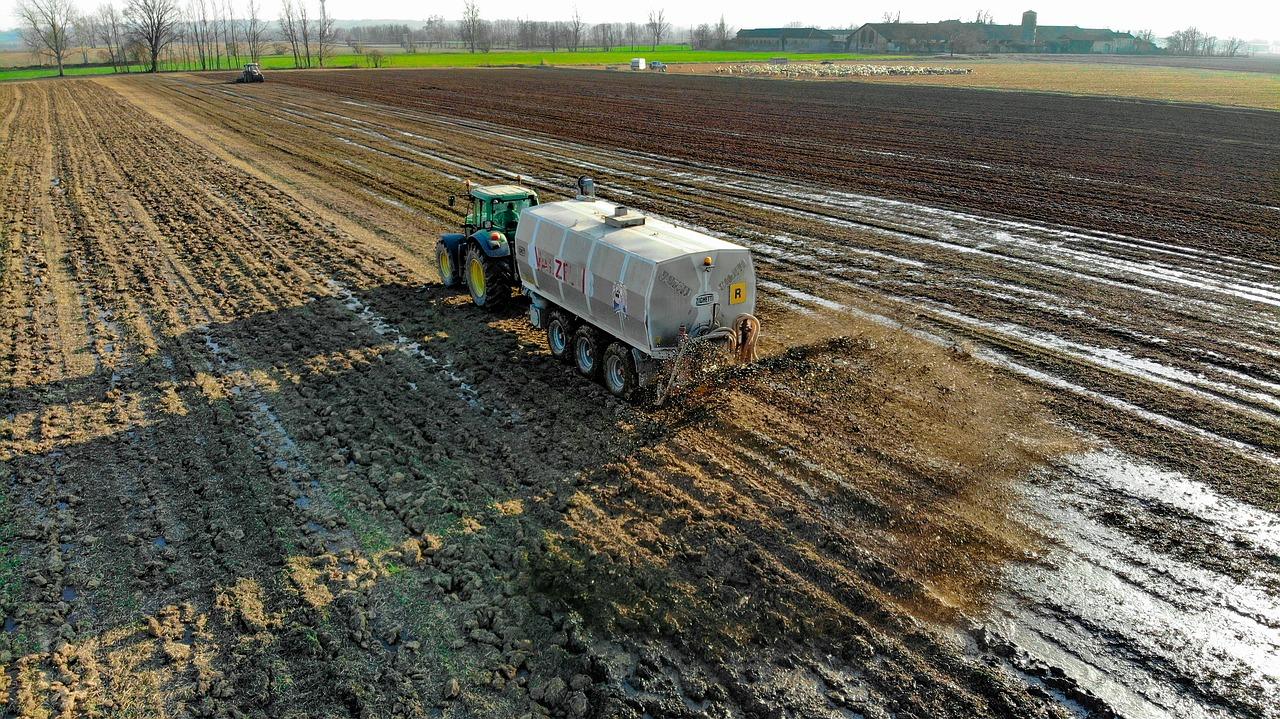

DIY Projects
What Is Liquid Fertilizer
Modified: January 22, 2024
Discover the benefits of liquid fertilizer for your DIY projects. Save time and money with this effective and easy-to-use gardening solution.
(Many of the links in this article redirect to a specific reviewed product. Your purchase of these products through affiliate links helps to generate commission for Chicagolandgardening.com, at no extra cost. Learn more)
Table of Contents
Introduction
Welcome to the world of DIY projects! If you’re someone who enjoys getting their hands dirty and creating something from scratch, you’re in the right place. DIY projects not only allow you to learn new skills but also give you the satisfaction of seeing your own work come to life. Whether you’re a seasoned DIY enthusiast or just starting out, this article will provide you with valuable insights and tips to make your projects a success.
DIY projects have gained immense popularity in recent years, thanks to their affordability, creativity, and the sense of accomplishment they bring. From building furniture to upgrading your home decor, the possibilities are endless. With a little bit of imagination and some basic tools, you can transform ordinary objects into something extraordinary.
One of the key elements in DIY projects is using the right materials and tools to achieve desired results. And when it comes to enhancing the growth and health of your indoor and outdoor plants, liquid fertilizer is your secret weapon. Liquid fertilizer is a concentrated nutrient solution that can be easily applied to plants through watering or spraying. It provides essential nutrients like nitrogen, phosphorus, and potassium that are essential for plant growth and development.
In this article, we will delve into the world of liquid fertilizers, exploring their benefits, different types, application methods, and factors to consider when choosing the right one for your DIY projects. We will also discuss common mistakes to avoid and the environmental impact of using liquid fertilizers. By the end of this article, you will have a solid understanding of how to use liquid fertilizers effectively and make your DIY projects flourish.
Definition of Liquid Fertilizer
Liquid fertilizer is a type of plant fertilizer that comes in liquid form. It is designed to provide essential nutrients to plants in a fast and efficient manner. Unlike solid fertilizer, which needs to be broken down by soil microorganisms before plants can absorb the nutrients, liquid fertilizer is immediately available for uptake by the plant roots.
Liquid fertilizers are typically made by combining water with concentrated nutrient solutions. These nutrient solutions can contain a variety of essential elements such as nitrogen (N), phosphorus (P), potassium (K), as well as secondary and micronutrients. The nutrient concentrations can vary depending on the specific needs of the plants being cultivated.
What sets liquid fertilizer apart from other forms of fertilizers is its versatility and ease of application. It can be applied to plants through various methods, such as pouring it directly onto the soil, spraying it onto the leaves, or incorporating it into irrigation systems. This allows for targeted nutrient delivery and quick absorption by the plants, resulting in faster growth and higher yields.
Liquid fertilizers are available in both organic and synthetic forms. Organic liquid fertilizers are derived from natural sources such as compost, manure, or plant extracts. They provide nutrients in a slow-release manner, ensuring a steady supply over time. Synthetic liquid fertilizers, on the other hand, are manufactured using chemical processes and provide readily available nutrients in a concentrated form.
It’s important to note that liquid fertilizer should be used in conjunction with solid fertilizer for optimal plant growth. Solid fertilizers provide a long-lasting source of nutrients, while liquid fertilizers offer quick and targeted nourishment. By using both types of fertilizers, you can ensure that your plants receive a balanced and consistent supply of essential nutrients.
Now that we have a clear understanding of what liquid fertilizer is and how it differs from other forms of fertilizers, let’s explore the numerous benefits it offers for DIY projects and plant care.
Benefits of Using Liquid Fertilizer
Liquid fertilizer offers several advantages that make it a popular choice among DIY enthusiasts and gardeners alike. Let’s take a closer look at some of the key benefits of using liquid fertilizer for your plants:
- Quick absorption: One of the major benefits of liquid fertilizer is that it provides nutrients to plants in a readily available form. Unlike solid fertilizers that require time to break down and release nutrients, liquid fertilizers are quickly absorbed by the plant roots. This immediate nutrient uptake allows plants to maximize their growth potential and achieve vibrant and healthy foliage.
- Even nutrient distribution: Liquid fertilizer can be easily applied to plants through various methods such as watering or foliar spraying. This allows for even distribution of nutrients across the plant’s root system or leaves. As a result, every part of the plant receives the necessary nutrients, promoting uniform growth and development.
- Targeted application: Liquid fertilizers give you the flexibility to apply nutrients directly to the plants that need them the most. Whether you have specific plants that require extra care or want to address nutrient deficiencies in certain areas of your garden, liquid fertilizers allow for targeted application. This precision ensures that nutrients are efficiently utilized and minimizes wastage.
- Faster results: Due to their quick absorption and targeted application, liquid fertilizers can deliver faster results compared to other forms of fertilization. The readily available nutrients in liquid fertilizers expedite plant growth, encourage flowering and fruiting, and boost overall plant vitality. This makes liquid fertilizer an ideal choice for those looking to see visible improvements in their plants within a shorter time frame.
- Convenience and versatility: Liquid fertilizers are easy to use and offer a high level of convenience. They can be applied through a variety of methods, including sprayers, watering cans, or irrigation systems, making it adaptable to different gardening setups. Additionally, liquid fertilizers can be easily mixed with other plant care products, allowing for a customized nutrient regimen tailored to your plants’ specific needs.
Overall, the benefits of using liquid fertilizer cannot be underestimated. Its quick absorption, even nutrient distribution, targeted application, faster results, and convenience make it a valuable tool for DIY projects and plant care. However, it’s essential to choose the right type of liquid fertilizer and apply it correctly to ensure optimal results. In the next section, we will explore the different types of liquid fertilizers available and how to choose the most suitable one for your DIY projects and plants.
Types of Liquid Fertilizers
When it comes to liquid fertilizers, there are several types available, each with its own unique composition and benefits. Understanding the different types will help you choose the most suitable fertilizer for your DIY projects and plants. Let’s explore some of the common types of liquid fertilizers:
- Complete liquid fertilizers: These fertilizers are formulated to provide a balanced mix of essential nutrients, including nitrogen (N), phosphorus (P), and potassium (K), along with secondary and micronutrients. Complete liquid fertilizers are suitable for general plant care and can be used on a wide range of plants.
- Organic liquid fertilizers: Organic liquid fertilizers are derived from natural sources such as compost, manure, or plant extracts. They offer a slow-release form of nutrients, providing a steady supply over time. Organic liquid fertilizers are a great choice for those looking to cultivate plants using natural and sustainable methods.
- Foliar fertilizers: Foliar fertilizers are liquid fertilizers that are applied directly to the leaves of plants. They are absorbed by the leaves and transported to different parts of the plant. Foliar fertilizers are ideal for providing nutrients directly to the plant’s foliage, especially during periods of rapid growth or when the soil conditions are not optimal for nutrient uptake.
- Specialized liquid fertilizers: These fertilizers are formulated to cater to specific plant requirements or growth stages. For example, there are liquid fertilizers specifically designed for flowering plants, vegetables, or promoting root development. Specialized liquid fertilizers can help address specific nutrient deficiencies or support targeted plant growth.
- Synthetic liquid fertilizers: Synthetic liquid fertilizers are manufactured using chemical processes and provide readily available nutrients in a concentrated form. These fertilizers can be easily customized based on the specific nutrient requirements of your plants and DIY projects.
When selecting a liquid fertilizer, consider the specific needs of your plants, the growth stage they are in, and any nutrient deficiencies they may have. It’s also important to follow the manufacturer’s instructions regarding application rates and frequency to avoid over-fertilization, which can be detrimental to your plants’ health.
Now that you’re familiar with the different types of liquid fertilizers, let’s move on to the next section, where we’ll discuss how to properly apply liquid fertilizer to maximize its effectiveness.
How to Apply Liquid Fertilizer
Proper application of liquid fertilizer is essential to ensure that your plants receive the necessary nutrients for optimal growth and health. Here are some steps to follow when applying liquid fertilizer to your DIY projects and plants:
- Read the instructions: Before applying liquid fertilizer, carefully read and follow the instructions provided by the manufacturer. Pay attention to the recommended application rates, frequency, and any specific instructions for your type of plants.
- Select the application method: Liquid fertilizer can be applied through various methods, including watering cans, sprayers, or irrigation systems. Choose the method that is most suitable for your DIY projects and the specific needs of your plants.
- Prepare the fertilizer: Dilute the liquid fertilizer according to the instructions provided. Some fertilizers may require mixing with water in specific ratios. Make sure to mix the fertilizer thoroughly to ensure an even distribution of nutrients.
- Location: Apply the liquid fertilizer at the base of the plants, avoiding direct contact with the leaves. This helps prevent potential leaf burn and ensures that the nutrients reach the plant’s root system effectively.
- Timing: Apply liquid fertilizer during the early morning or late afternoon when the temperature is cooler. This allows the plants to absorb the nutrients more effectively without the risk of evaporation in hot weather.
- Frequency: Follow the recommended application frequency for your specific type of liquid fertilizer. Over-application can lead to nutrient imbalances and potentially harm your plants, while under-application may not provide sufficient nutrients.
- Consider plant needs: Take into account the growth stage and specific nutrient requirements of your plants. Different plants have different needs, so adjust the application rates and frequency accordingly.
- Monitor and adjust: Regularly monitor the growth and health of your plants to gauge the effectiveness of the liquid fertilizer. If you notice any signs of nutrient deficiencies or excesses, make necessary adjustments to the application rates or consider using a different type of liquid fertilizer.
Remember to always follow safety precautions when handling liquid fertilizers, such as wearing protective gloves and clothing. Store the fertilizers in a secure location, away from children and pets.
By properly applying liquid fertilizer to your DIY projects and plants, you can ensure that they receive the essential nutrients they need to thrive. In the next section, we will discuss important factors to consider when choosing the right liquid fertilizer for your specific needs.
Factors to Consider When Choosing Liquid Fertilizer
Selecting the right liquid fertilizer is crucial to ensure optimal growth and health for your plants. Here are some important factors to consider when choosing the best liquid fertilizer for your DIY projects:
- Plant type: Different plants have varying nutrient requirements. Consider the specific needs of your plants, such as whether they are flowering plants, vegetables, or indoor houseplants. Look for a liquid fertilizer that is specially formulated for the type of plants you are cultivating.
- Nutrient composition: Liquid fertilizers come with different nutrient compositions, including nitrogen (N), phosphorus (P), and potassium (K), along with secondary and micronutrients. Assess your soil and plant nutrient levels to determine any deficiencies or imbalances, and choose a fertilizer that can address those specific needs.
- Organic or synthetic: Decide whether you prefer an organic or synthetic liquid fertilizer. Organic fertilizers are derived from natural sources and provide slow-release nutrients, while synthetic fertilizers offer readily available nutrients in concentrated forms. Consider your gardening principles and preferences when making this choice.
- Application method: Determine how you plan to apply the liquid fertilizer. If you prefer foliar spraying, select a fertilizer that is suitable for that application method. Similarly, if you intend to use an irrigation system, ensure that the fertilizer is compatible with such systems.
- Water solubility: Check the solubility of the liquid fertilizer in water. Some fertilizers may require additional agitation or special mixing instructions to ensure proper dissolution. Opt for a fertilizer that dissolves easily and does not leave any residue or clog the application equipment.
- Environmental impact: Consider the environmental impact of the fertilizers you are considering. Choose products that are environmentally friendly and minimize the risk of runoff, leaching, and water pollution. Look for fertilizers that are labeled as eco-friendly or sustainable.
- Cost and availability: Evaluate the cost and availability of the liquid fertilizer. Consider your budget and ensure that the fertilizer you choose is readily accessible. Research different brands and compare prices to find the most suitable option.
By considering these factors, you can select a liquid fertilizer that best meets the specific needs of your DIY projects and plants. Remember to always follow the manufacturer’s instructions for application rates and frequency to avoid over or under-fertilization.
Now that we have covered the factors to consider when choosing a liquid fertilizer, let’s discuss some common mistakes to avoid when using liquid fertilizer to ensure successful and healthy plant growth.
Common Mistakes to Avoid When Using Liquid Fertilizer
Using liquid fertilizer can greatly benefit your DIY projects and plants, but it’s important to avoid common mistakes to ensure optimal results. Here are some common mistakes to avoid when using liquid fertilizer:
- Over-fertilizing: Applying too much fertilizer can harm your plants. It can lead to nutrient imbalances, root burn, and even plant death. Follow the recommended application rates provided by the manufacturer and monitor your plants for any signs of nutrient excesses.
- Under-fertilizing: On the other hand, under-fertilizing can result in nutrient deficiencies and slow plant growth. Make sure you apply the fertilizer at the appropriate rates and frequency to provide your plants with the necessary nutrients they need to thrive.
- Improper dilution: It’s important to properly dilute the liquid fertilizer according to the instructions provided. Failing to do so can result in nutrient imbalances or even damage to your plants. Follow the recommended ratios and ensure thorough mixing to achieve an even distribution of nutrients.
- Wrong timing: Applying liquid fertilizer at the wrong time can hinder its effectiveness. Avoid applying fertilizer during extreme heat or cold, as the plants may not be able to absorb the nutrients effectively. Apply the fertilizer during the early morning or late afternoon when the temperature is more favorable.
- Ignoring soil conditions: Soil conditions play a crucial role in nutrient absorption. If your soil is compacted or has pH imbalances, it may affect the availability and uptake of nutrients. Address any underlying soil issues before applying liquid fertilizer for better results.
- Using expired or improper storage: Check the expiration date of the liquid fertilizer before using it. Expired fertilizers may lose their effectiveness and can potentially harm your plants. Also, ensure proper storage conditions to maintain the fertilizer’s quality and potency.
- Not considering plant stage: Different plant stages have varying nutrient requirements. Adjust your fertilizer application rates and frequency based on the growth stage of your plants. Young seedlings may require less fertilizer compared to mature plants.
- Applying to drought-stressed plants: Avoid applying liquid fertilizer to plants that are already under stress from drought or other factors. This can further stress the plants and lead to leaf burn or root damage. Ensure that your plants are adequately hydrated before applying fertilizer.
By avoiding these common mistakes, you can ensure that your plants receive the proper nutrients they need without causing any harm or hindering their growth. Remember to closely monitor your plants and make adjustments as necessary to meet their specific nutrient requirements.
As we near the end of our discussion, let’s take a moment to explore the environmental impact of using liquid fertilizer and how to minimize its effects.
Environmental Impact of Liquid Fertilizer
While liquid fertilizers offer numerous benefits for plant growth and DIY projects, it’s important to be aware of their potential environmental impact. Here are some key considerations regarding the environmental effects of liquid fertilizer and how to minimize them:
1. Nutrient runoff: Excessive or improper use of liquid fertilizer can result in nutrient runoff, where the excess nutrients wash away into nearby bodies of water. This can cause water pollution, leading to excessive algae growth and oxygen depletion in aquatic ecosystems. To minimize nutrient runoff, follow recommended application rates, avoid fertilizing before heavy rainfall, and avoid applying fertilizer near bodies of water.
2. Groundwater contamination: If liquid fertilizer is overapplied or if it leaches through the soil, it can potentially contaminate groundwater. This can potentially harm drinking water sources and affect other plants, animals, and ecosystems that rely on clean water. To minimize groundwater contamination, apply liquid fertilizer only as needed and avoid excessive or unnecessary use.
3. Soil degradation: Excessive and imbalanced use of liquid fertilizer can lead to soil degradation. Over time, the repeated use of high-nitrogen liquid fertilizers can disrupt the natural balance of soil microorganisms, negatively impacting soil health. It’s important to regularly test your soil’s nutrient levels and only apply fertilizers when necessary to maintain a healthy soil ecosystem.
4. Air pollution: Some liquid fertilizers release gases such as ammonia into the air, contributing to air pollution. This can have negative impacts on air quality and human health, especially in areas with high agricultural activity. To minimize air pollution, choose liquid fertilizers with lower emissions and ensure proper handling and application techniques.
5. Opt for eco-friendly alternatives: Consider using organic liquid fertilizers or eco-friendly alternatives to minimize the environmental impact. Organic fertilizers are derived from natural sources and are typically more environmentally friendly, as they release nutrients slowly and are less likely to leach into water bodies.
To minimize the environmental impact of liquid fertilizer, use it responsibly and in accordance with recommended guidelines. Avoid overapplication and carefully consider the specific nutrient needs of your plants. Implementing sustainable gardening practices, such as composting, crop rotation, and using integrated pest management techniques, can also help reduce the reliance on fertilizers.
By being mindful of the environmental impact of liquid fertilizers and taking appropriate measures to minimize their effects, we can promote healthier ecosystems and sustainably nurture our plants.
With this understanding of the environmental impact, we can now conclude our exploration of liquid fertilizers and DIY projects.
Conclusion
Embarking on DIY projects provides a rewarding journey of creativity and personal accomplishment. By incorporating liquid fertilizer into your projects, you can enhance the growth and health of your plants, creating stunning indoor and outdoor spaces. Liquid fertilizer offers quick absorption, even nutrient distribution, targeted application, faster results, and convenience, making it a valuable tool for DIY enthusiasts and gardeners.
When choosing a liquid fertilizer, consider factors such as plant type, nutrient composition, application method, water solubility, environmental impact, and cost. Avoid common mistakes like over-fertilizing, under-fertilizing, improper dilution, wrong timing, ignoring soil conditions, using expired products, and not considering the plant’s growth stage.
Being mindful of the environmental impact of liquid fertilizers is crucial. Minimizing nutrient runoff, groundwater contamination, soil degradation, and air pollution can be achieved by following recommended application rates, choosing eco-friendly alternatives, and practicing sustainable gardening techniques.
As you embark on your DIY projects, immerse yourself in the joy of creating and nurturing your plants. With the right liquid fertilizer and proper application techniques, you can witness your projects flourish, your plants thrive, and your gardening skills grow. Enjoy the process, and may your DIY endeavors be filled with abundant growth and beauty.
